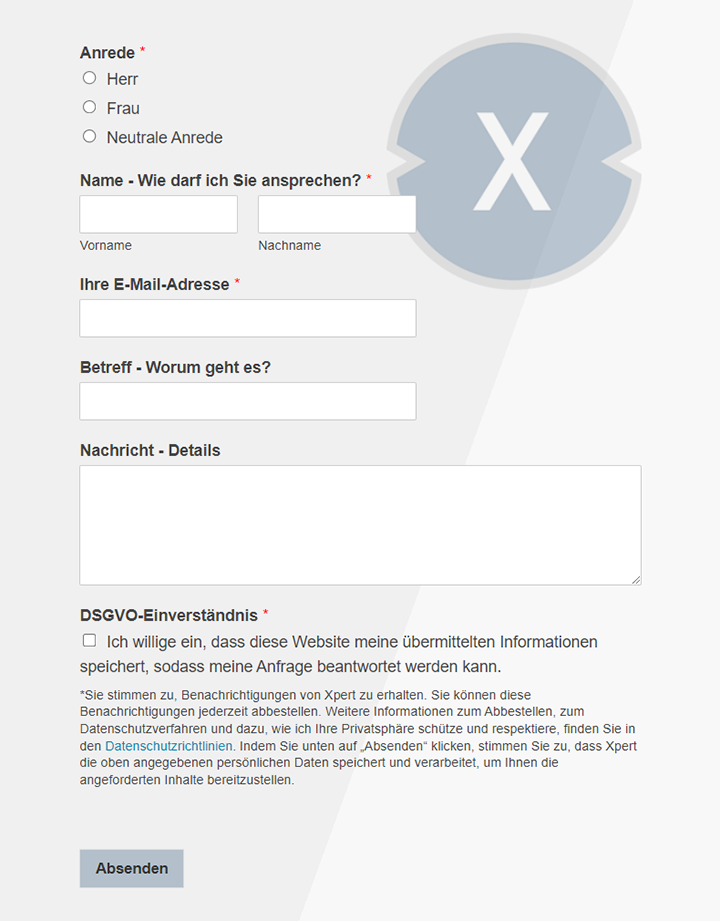Danger of over-transparency: Making digitalization and transformation successful: – How we can prevent the new transparency from paralyzing the organization
Language selection 📢
Published on: October 13, 2024 / update from: October 13, 2024 - Author: Konrad Wolfenstein

Danger of over-transparency: Shaping digitalization and transformation successfully – Image: Xpert.Digital
🌐🚀 Digital transformation: success factor for companies in the age of transparency
🌟 The advantages of the new transparency
Digital transformation has long been more than a trend; it has become a decisive factor for the success of companies. It is changing not only technologies, but also business models, processes and the way people work together. One of the most significant changes that comes with digitalization is the increased transparency within organizations. Although transparency offers many benefits, it also carries the risk of crippling the organization if not handled appropriately.
⚖️ The challenges of over-transparency
But too much transparency can be counterproductive. When employees are flooded with information, it can lead to overwhelm and stress. Decisions could be delayed because too many opinions need to be taken into account. There is also the risk that sensitive information falls into the wrong hands or that internal conflicts become open, which can negatively impact the working atmosphere.
💾 Paralysis through information overload
Too much information can significantly impair an organization's ability to act. If every decision is reviewed and discussed by everyone, the company loses agility. Decision making becomes slower, projects are delayed and competitive opportunities may be missed. Employees could get lost in details and lose sight of the big picture.
🛠️ Strategies for effectively using transparency
To reap the benefits of transparency without experiencing the negative effects, companies should pursue the following strategies:
1. 🔍 Selective information sharing
Not every piece of information is relevant for everyone. It should be clearly defined which information is important for which employee groups. Well-structured information management helps to control the flood of information.
2. 📣 Clear communication channels
Establish established communication channels and protocols. This way, employees know where they can find and share what information. This prevents duplication of work and misunderstandings.
3. 🧑💼 Establish responsibilities
Despite transparency, clear responsibilities must remain. Employees should know who is responsible for which decisions to avoid unnecessary discussions.
4. 🔒 Raise awareness of data protection
Train your employees how to handle sensitive data. Data protection policies must be clearly communicated and adhered to to minimize risks.
5. 🌱 Promote a culture of openness
An open corporate culture in which mistakes are seen as learning opportunities promotes trust and the open exchange of information without fear of negative consequences.
👔 The role of management
Managers play a crucial role in successfully implementing transparency. They must act as role models and demonstrate the principles of transparency. Through regular communication and feedback, you can ensure that all employees are on the same page and feel included. They should also ensure that transparency does not lead to a loss of control, but rather is used as a means of improvement.
💡 Technological support
Modern technologies can help manage transparency effectively. Collaboration platforms, intranets and data management systems enable the targeted exchange of information. It is important that these tools are user-friendly and make everyday work easier instead of complicating it.
⚖️ Find the right balance
Transparency should neither be overly limited nor limitless. It is important to find a balance that takes into account both the information needs of employees and the security requirements of the company. A well-thought-out transparency policy can help achieve this balance.
📈 Case study: Successful transparency in practice
A medium-sized company has recognized that its internal communication is inefficient and that projects are being delayed as a result. By introducing a company-wide collaboration platform, information could be centrally bundled and made accessible to relevant employees. At the same time, clear guidelines were established as to which information should be shared and which must remain confidential. The employees were trained and the managers actively promoted open exchange. The result was increased efficiency, higher employee satisfaction and faster decision making.
📋 Immense opportunities
Digital transformation offers immense opportunities, but also presents companies with new challenges. Transparency is a key element that can be both beneficial and hindering. To prevent the new transparency from paralyzing the organization, companies must act proactively. Through targeted strategies, clear communication channels and a culture of trust, transparency can become the engine for innovation and success without impairing the organization's ability to act.
⚙️ Requirements for transparency and information management
The digital world is constantly evolving, and with it the requirements for transparency and information management. Companies should therefore remain flexible and regularly review and adapt their strategies. This is the only way they can ensure that they fully exploit the benefits of digitalization while protecting their organization from the risks of over-transparency.
📣 Similar topics
- 📊 Danger of over-transparency: How digital transformation is changing organizations
- 🔍 The advantages of transparency: trust & collaboration within the company
- ⚖️ Strategies for overcoming over-transparency: Finding balance in the flood of information
- 🚀 The role of management in digital transformation and transparency
- 🛠️ Technological support for effective transparency management
- 🌐 Transparency in the digital age: opportunities and challenges for companies
- 💡 Successful transparency in practice: A case study from business
- 📈 The right balance for transparency: information needs vs. security requirements
- 👥 Culture of openness: How companies can build trust
- 📅 Challenges of digitalization: Avoid the risks of over-transparency
#️⃣ Hashtags: #DigitalTransformation #Transparency #Leadership #Informationmanagement #Openness
We are there for you - advice - planning - implementation - project management
☑️ Industry expert, here with his own Xpert.Digital industry hub with over 2,500 specialist articles
I would be happy to serve as your personal advisor.
You can contact me by filling out the contact form below or simply call me on +49 89 89 674 804 (Munich) .
I'm looking forward to our joint project.
Xpert.Digital - Konrad Wolfenstein
Xpert.Digital is a hub for industry with a focus on digitalization, mechanical engineering, logistics/intralogistics and photovoltaics.
With our 360° business development solution, we support well-known companies from new business to after sales.
Market intelligence, smarketing, marketing automation, content development, PR, mail campaigns, personalized social media and lead nurturing are part of our digital tools.
You can find out more at: www.xpert.digital - www.xpert.solar - www.xpert.plus


























